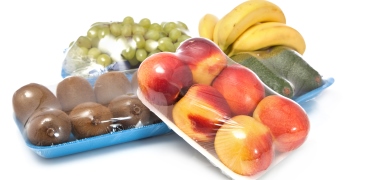Plastics Prevent Waste

Plastics are essential in ensuring food quality during storage and transport over long distances. Plastic packaging ensures our food has a longer shelf-life and less bacterial growth making it fresher and safer when it reaches the consumer. Plastics also allow for safer food preparation and less food waste.
Plastic packaging for food needs to not only protect and deliver it safely to the consumer it needs to also meet government regulations. For example plastic packaging used to preserve meat to the point-of-sale accounts for only 2% of the energy used in producing the meat. Prevention of food spoilage is a major energy conservation activity. Around 50% of food produced in developing countries is wasted before it reaches the consumer, with much of this wastage being attributable to a lack of adequate packaging.
Food safety
Proper packaging is a sensible investment because it keeps our food safe and results in less food waste. Without using plastic packaging the shelf life or our food would be shorter and the growth of bacteria in our food would be faster. For example, thin plastic film and plastic vacuum packaging help to bock oxygen and prevent discoloration of meats keeping them fresher resulting in less food waste. Alongside this factory-sealed plastic containers and bags help to preserve the flavour, texture, and nutrients of our food by locking out air, preventing absorption of nasty odours and flavours. Where would we be without ziplock bags and plastic containers to keep our leftovers fresh and tasty?
All new plastics food packaging is carefully reviewed before it is used and any new materials are only permitted once the government regulations are met.
Plastic packaging
Plastic packaging can be moulded, extruded, cast and blown into many different shapes, films or foams and is lightweight and strong. This flexibility enables the creation of packaging which creates less waste, consumes fewer resources and creates fewer emissions than alternative materials. Because plastics are so lightweight, more food can be transported with less fuel, also resulting in fewer greenhouse gas emissions. Alongside this most plastic containers used in food packaging are recyclable, so less material ends up in landfills.
Generally, ten times more resources—materials, energy, water—are used to make and distribute food than are used to make the packaging to protect it. Ensuring our food is packages well and lasts reduces vast quantities of wasted food which ends up in landfill.
